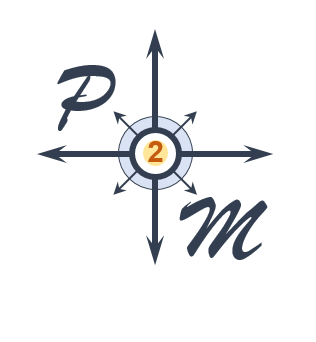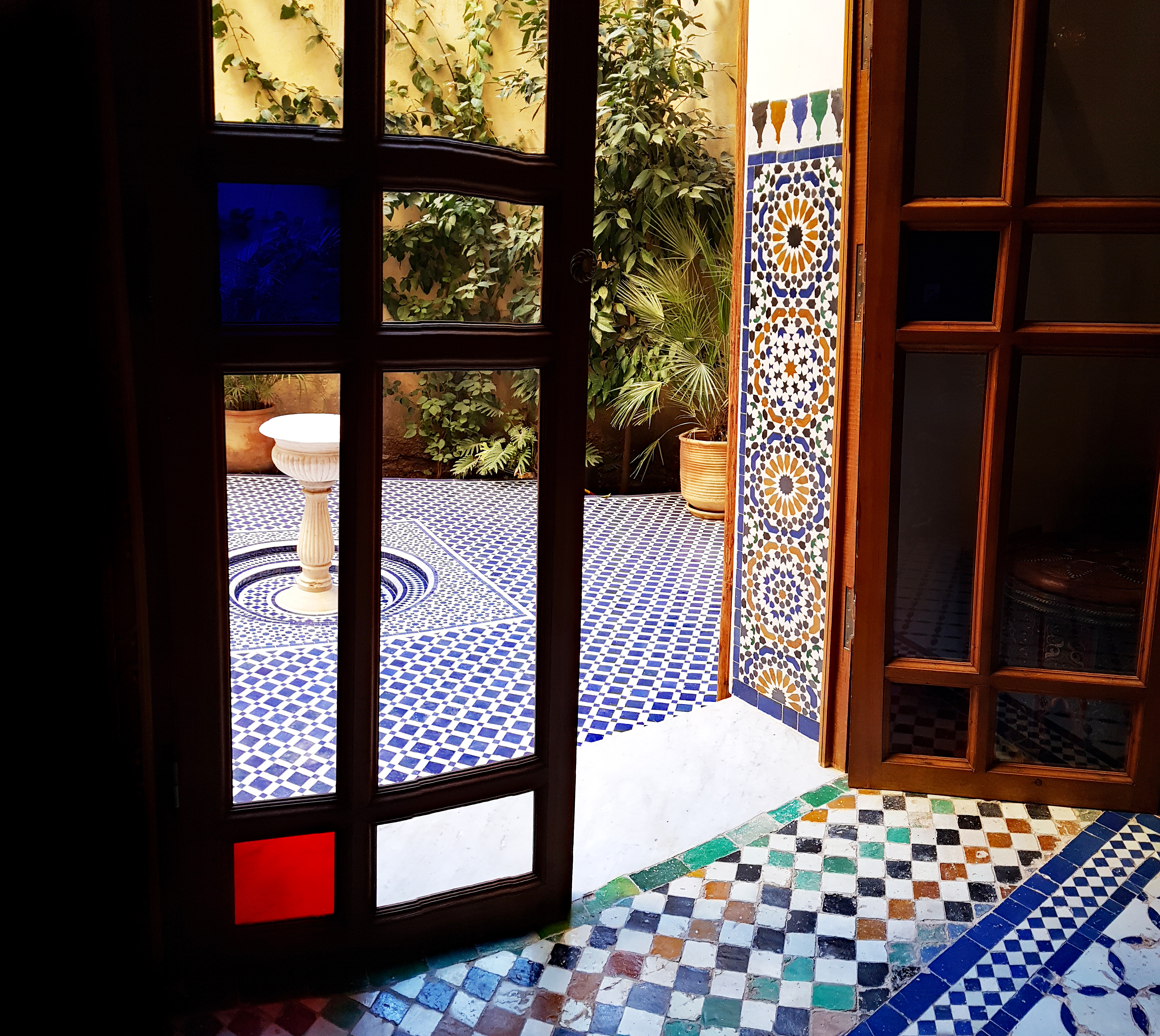The trip from Tunis to Fez began as planned; although, in hindsight, we should have asked for 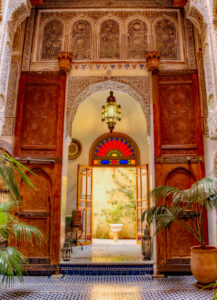 a late check-out from our Airbnb apartment. At 11AM, after breakfast, we made a short side trip to the Poste Tunisienne office to return Nena’s (see earlier post) Peloponnese map – with a bonus apologetic postcard – we had mistakenly left in our luggage. We arrived at the small Tunis airport around noon for our 5:40PM departure, only to hang out at the only pre-security café for three and a half hours until the Royal Air Maroc (RAM, to local Moroccans) check-in counter opened. With our Tunis to Fez-via-Casablanca boarding passes in hand, we continued the embarkation process through the police passport check, customs and security. Now, with only two hours remaining before our flight, we resumed the wait. We arrived in Fez at 10:15PM, both tired from our wait-and-travel day and excited to begin this new journey. Not yet. Wait! RAM, seemingly also very tired, had neglected to put Gilles’ luggage on the connecting flight – our first luggage mishap since leaving Toronto on September 1st. After filling out the necessary forms and leaving the airport with a lighter load, we were finally on our way to the Airbnb riad. It was 11:30PM when we arrived.
a late check-out from our Airbnb apartment. At 11AM, after breakfast, we made a short side trip to the Poste Tunisienne office to return Nena’s (see earlier post) Peloponnese map – with a bonus apologetic postcard – we had mistakenly left in our luggage. We arrived at the small Tunis airport around noon for our 5:40PM departure, only to hang out at the only pre-security café for three and a half hours until the Royal Air Maroc (RAM, to local Moroccans) check-in counter opened. With our Tunis to Fez-via-Casablanca boarding passes in hand, we continued the embarkation process through the police passport check, customs and security. Now, with only two hours remaining before our flight, we resumed the wait. We arrived in Fez at 10:15PM, both tired from our wait-and-travel day and excited to begin this new journey. Not yet. Wait! RAM, seemingly also very tired, had neglected to put Gilles’ luggage on the connecting flight – our first luggage mishap since leaving Toronto on September 1st. After filling out the necessary forms and leaving the airport with a lighter load, we were finally on our way to the Airbnb riad. It was 11:30PM when we arrived.
 Riad Palace of 1001 Nights is owned by Frank, who spent five years meticulously renovating the old house (14th century) to its current luxurious state. Because he is based in France, Frank hired a local caretaker, Nourredine, to welcome guests and act as property guard. The riad also provided the option to have Hayat, Nourredine’s sister, prepare and serve guests breakfast and dinners. We opted for both and it was worth every euro. Both Nourredine and Hayat’s hospitality and genuineness contributed to the charm of the place: he checked in on us every evening, dealt with RAM to locate our lost luggage, even accompanying us to the airport to retrieve the bag. And Hayat not only served delicious food, but always did it with such good humour. She also patiently tried to teach us a few Arabic phrases. Laylah saeedah, exchanged between us every evening, is the only one that stuck – “Goodnight, Hayat”.
Riad Palace of 1001 Nights is owned by Frank, who spent five years meticulously renovating the old house (14th century) to its current luxurious state. Because he is based in France, Frank hired a local caretaker, Nourredine, to welcome guests and act as property guard. The riad also provided the option to have Hayat, Nourredine’s sister, prepare and serve guests breakfast and dinners. We opted for both and it was worth every euro. Both Nourredine and Hayat’s hospitality and genuineness contributed to the charm of the place: he checked in on us every evening, dealt with RAM to locate our lost luggage, even accompanying us to the airport to retrieve the bag. And Hayat not only served delicious food, but always did it with such good humour. She also patiently tried to teach us a few Arabic phrases. Laylah saeedah, exchanged between us every evening, is the only one that stuck – “Goodnight, Hayat”.
Our beautiful riad was located deep in the heart of the Fez medina, Fes el Bali (Old Fez), along dark, narrow, and winding streets. It was easy to get lost in the medina; and, we did, many times. That was part of the adve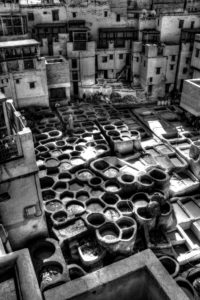 nture: walking aimlessly, discovering new souks and cafés, constantly getting directions from locals to places we were not seeking. Some places we did search out, like the famous Fez leather tanneries – just follow the pigeon poop smell – and the Blue Gate; others, we stumbled upon, like the many mosques, souks, squares and gardens. We also explored the other medina, Fes Jdid (New Fez) – established in the 13th century – and the old Jewish neighbourhood (Mellah) and synagogues within it. Just past Fes Jdid is the Royal Palace of Fez – there is a royal palace in every major Moroccan city – that is not open to the public, but the entrance doors and surrounding square are definitely picture-worthy. To us, the medinas were the happening places. We only ventured outside them, in Ville Nouvelle, a few times, mostly for ATM withdrawals and to buy our train tickets to Marrakesh.
nture: walking aimlessly, discovering new souks and cafés, constantly getting directions from locals to places we were not seeking. Some places we did search out, like the famous Fez leather tanneries – just follow the pigeon poop smell – and the Blue Gate; others, we stumbled upon, like the many mosques, souks, squares and gardens. We also explored the other medina, Fes Jdid (New Fez) – established in the 13th century – and the old Jewish neighbourhood (Mellah) and synagogues within it. Just past Fes Jdid is the Royal Palace of Fez – there is a royal palace in every major Moroccan city – that is not open to the public, but the entrance doors and surrounding square are definitely picture-worthy. To us, the medinas were the happening places. We only ventured outside them, in Ville Nouvelle, a few times, mostly for ATM withdrawals and to buy our train tickets to Marrakesh.
Chefchaouen
Our day trip to Chefchaouen started off with a bit of a hiccup; a miscommunication on the meeting time between our taxi driver and us delayed our departure. After phoning our driver, Ismail, and confirming our location, we were picked up and taken to our destination.
Chefchaouen is a four hour drive north of Fez, in the heart of the Rif mountains that separate coastal northern Morocco from the rest of the country. The city is famous for its brightly painted blue medina; the contrasting shades along the narrow, winding streets make it a photographer’s paradise. The area is also known for its abundant supply of hashish, but that’s not why we were there, we were offered it many times however.
On the way to Chefchaouen, our driver, Ismail, stopped at a roadside market. Just behind the market was a jaw-dropping view of an artificial lake formed by a dam, the surrounding valley and the mountains beyond it. Because it hadn’t rained since April – over six months – the lake was reduced to a third of its normal size. 
After a few snapshots and the purchase of a (legitimate?) fossil, we got back on the road. An hour later, Ismail made a short personal stop at a small olive oil mill to place an order for 70 litres of freshly squeezed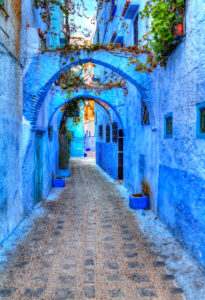 oil. Discovering we had never observed the production of cold-pressed olive oil, he asked permission from the manager to tour the plant. Because this was a small-production mill, we were able to freely walk about from one production area to another, taking pictures as we pleased. The process was quite simple: first, olives, either collected from the mill’s orchard or purchased locally from small farms, are poured into a metal and stone grinder and pulverized into paste. The paste is collected and placed between straw-woven mats that are stacked and weighted. The oil slowly seeps through the fibres, drips down channels into vats. The slow, manual method we were observing is necessary to make cold-pressed olive oil. The remaining dry olive paste was collected, placed in wheelbarrows and dumped in large heaps. We were told the paste would be used to make soap.
oil. Discovering we had never observed the production of cold-pressed olive oil, he asked permission from the manager to tour the plant. Because this was a small-production mill, we were able to freely walk about from one production area to another, taking pictures as we pleased. The process was quite simple: first, olives, either collected from the mill’s orchard or purchased locally from small farms, are poured into a metal and stone grinder and pulverized into paste. The paste is collected and placed between straw-woven mats that are stacked and weighted. The oil slowly seeps through the fibres, drips down channels into vats. The slow, manual method we were observing is necessary to make cold-pressed olive oil. The remaining dry olive paste was collected, placed in wheelbarrows and dumped in large heaps. We were told the paste would be used to make soap.
 We arrived in Chefchaouen for lunch. Choosing a busy café, we sat at a table next to two Torontonians travelling from Lisbon to Fez. Since we both had information on the other’s future destination, we exchanged a few tips before going our separate ways. We then slowly walked through the medina, stopping every few feet to take pictures – different lighting, angles and shades created a brand new image. After a few hours of meandering, we returned to our designated meeting spot, ready to head back to Fez. On our way to Chefchaouen, Ismail had served as guide, answering all of our questions and commenting on different points of interest, including village markets and the Pont du Loukkos, an abandoned border control between the former French and Spanish protectorates. This was a great contrast to the return trip: we all sat in silence, focused on the road ahead; tired from a long day of exploration, with not much more to say. We weren’t fidgety in an awkward silence; merely satisfied from a fulsome journey. It was time to move on to our next destination: Marrakesh.
We arrived in Chefchaouen for lunch. Choosing a busy café, we sat at a table next to two Torontonians travelling from Lisbon to Fez. Since we both had information on the other’s future destination, we exchanged a few tips before going our separate ways. We then slowly walked through the medina, stopping every few feet to take pictures – different lighting, angles and shades created a brand new image. After a few hours of meandering, we returned to our designated meeting spot, ready to head back to Fez. On our way to Chefchaouen, Ismail had served as guide, answering all of our questions and commenting on different points of interest, including village markets and the Pont du Loukkos, an abandoned border control between the former French and Spanish protectorates. This was a great contrast to the return trip: we all sat in silence, focused on the road ahead; tired from a long day of exploration, with not much more to say. We weren’t fidgety in an awkward silence; merely satisfied from a fulsome journey. It was time to move on to our next destination: Marrakesh.
